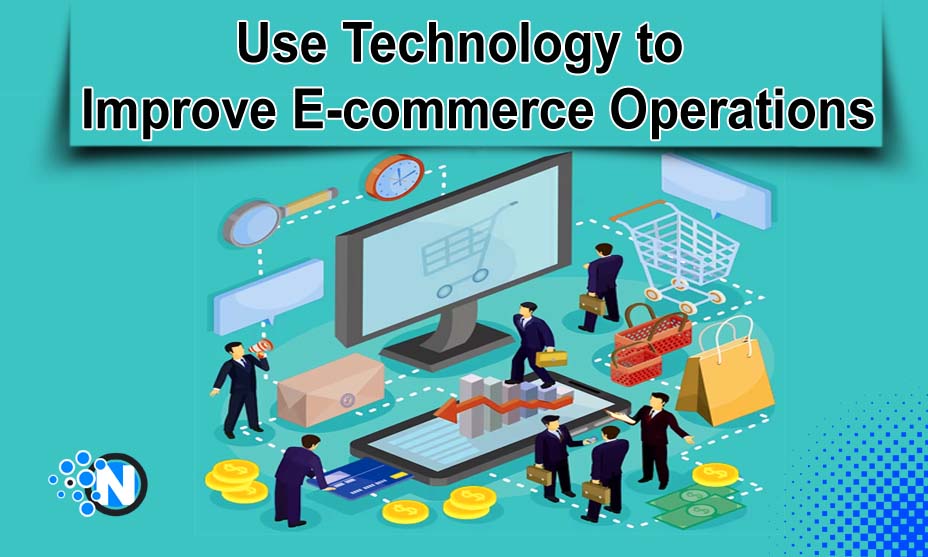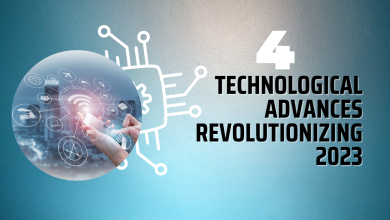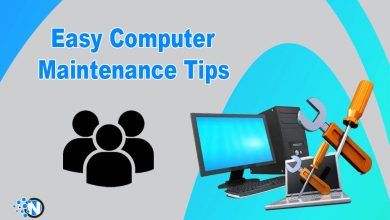8 Ways to Use Technology to Improve E-commerce Operations

Online shopping will continue to grow into 2027, according to a recent study. Statista found that this industry will reach over $1.7 trillion. Stay ahead of your competition by understanding your customers’ desires and embracing the latest trends. Here are eight ways to use technology to improve e-commerce operations.
Here is how technology improves E-commerce operations:
Chat Bots

E-commerce businesses rely on the need to turn visitors into paying customers. To increase click-through rates and visits, you might want to consider using chatbot technology. It increases customer engagement — especially when your audience has a question about your products and services. Some e-commerce brands have included the use of chatbots and artificial intelligence (AI) to boost engagement.
Artificial Intelligence
Speaking of which, artificial Intelligence is a controversial topic these days. However, it can help make your e-commerce business boom. Huge brands like Google and Microsoft are heavily investing in this new technology.
It can improve the customer service experience with automated robots that perform tasks in physical stores. Some of those responsibilities include greeting customers, providing information, and bringing products to the sales floor.
Livestream Commerce
Livestream commerce is similar to home shopping. It allows your customers to see how a product looks in real-time. They can also buy directly from your online store. You can use this technology to create a sense of urgency by offering discounts and promotions.
Augmented & Virtual Reality
Augmented reality (AR) and virtual reality (VR) can create an immersive experience. It will give your customers a better idea of what a product looks like. It will bring that immediate experience to them. E-commerce companies are investing in this tech to increase customer engagement and improve the online shopping experience.
Buy Now, Pay Later
Buy now, pay later (BNPL) is a trend that’s attracting e-commerce brands. This allows your customers to make installments for big and small purchases. This trend premiered during the pandemic, giving people the flexibility they need when they’re on a budget.
Since most online transactions use credit cards, BNPL became a possibility. By 2026, this payment option will hit $680 billion, according to Insider Intelligence.
E-wallet Technology
This feature is a must for e-commerce brands. Having an e-wallet technology builds trust and transparency with your customers. They won’t be required to input their credit card information every time. All they need is two-factor authentication to sign in before making a purchase.
Social Commerce
Social commerce is growing in popularity thanks to TikTok and Instagram. Now, your customers can shop directly from your store while they’re scrolling the timeline. This technology trend offers an easy online shopping experience. Since millions of Americans purchase on social media, it’s likely to grow in the next few years.
Mobile Shopping

E-commerce brands must allow mobile shopping. Insider Intelligence found that 69.9% percent of transactions will take place on a mobile phone in 2024. You should have a mobile website that’s accessible on all devices. Consumers want to have the flexibility and freedom to shop on their smartphones while on the go.
In Short, mobile shopping isn’t just a trend; it’s a fundamental shift in consumer behavior and expectations. E-commerce brands that embrace this shift by prioritizing mobile website accessibility position themselves for sustained success in the digital marketplace. It’s a strategic move that not only meets current consumer demands but also future-proofs your business in an increasingly mobile-driven retail landscape.
Sum Up
In essence, technology is not merely an auxiliary element of e-commerce; it’s the backbone upon which the industry thrives. By streamlining operations, enhancing customer experiences, and facilitating adaptability to changing market dynamics, technology is an essential component for e-commerce businesses seeking sustainable growth and enduring competitiveness. Its ongoing evolution promises to shape the future of online retail in ways that were once unimaginable.
FAQ
Here are five frequently asked questions about how technology can help improve e-commerce operations:
1. How can technology enhance the customer shopping experience in e-commerce?
Ans: Technology can improve the customer experience through personalization, recommendation engines, and chatbots for real-time assistance. Augmented reality and virtual reality can also be used for virtual product try-ons or immersive shopping experiences.
2. What role does data analytics play in e-commerce operations, and how can technology support it?
Ans: Data analytics helps e-commerce businesses understand customer behavior, preferences, and trends. Technology, such as big data analytics tools and machine learning algorithms, can process vast amounts of data to provide valuable insights for inventory management, pricing strategies, and targeted marketing.
3. How can artificial intelligence (AI) and machine learning (ML) benefit e-commerce operations?
Ans: AI and ML can automate various aspects of e-commerce, including demand forecasting, fraud detection, returns abuse protection, and customer support. These technologies can also power chatbots for instant customer assistance, optimize product recommendations, and personalize marketing campaigns.
4. What role does mobile technology play in e-commerce, and how can businesses leverage it?
Ans: Mobile technology is crucial for e-commerce, as many consumers prefer shopping on mobile devices. Businesses can optimize their websites and apps for mobile, implement mobile payment solutions, and use location-based services to offer targeted promotions and improve the overall mobile shopping experience.
5. How can technology assist with inventory management and order fulfillment in e-commerce?
Ans: Technology can help streamline inventory management through inventory tracking systems, barcode scanners, and RFID technology. Additionally, automation and robotics can be used in warehouses and fulfillment centers to speed up order processing and reduce errors.
These questions highlight some of the key ways technology can enhance e-commerce operations, but there are many more aspects of e-commerce where technology can play a transformative role, from supply chain optimization to digital marketing strategies.




